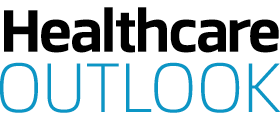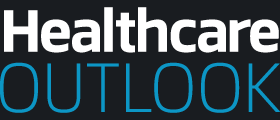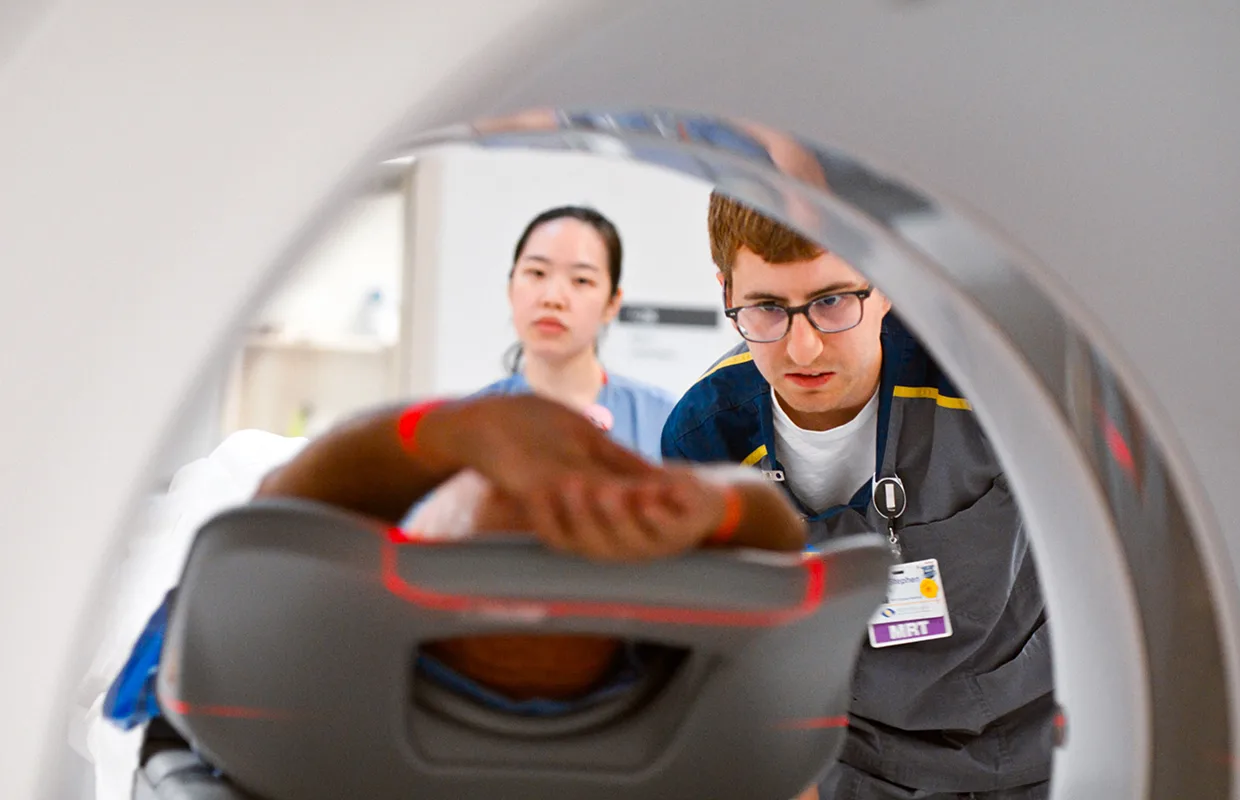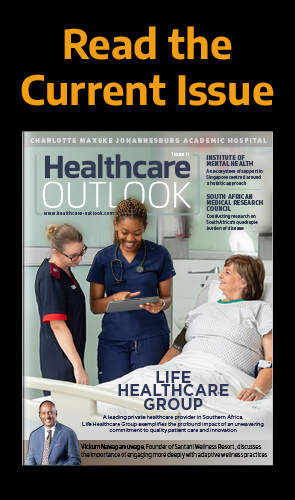AN EXTENSIVE OPERATION
Around the world, many healthcare systems have found themselves in crisis, as demand for care begins to significantly outstrip supply alongside the emergence of various financial challenges.
Canada’s healthcare system is no different and, like countless others, is struggling to meet the needs of the population, particularly when it comes to the rise of ‘hallway healthcare’ as a result of overcrowding.
Southlake Health (Southlake), a large acute care provider in Ontario, shines as a beacon of hope amidst this turbulent healthcare climate, driven by its new-found mission to more deeply integrate clinical services within surrounding communities.
“While our core catchment area is nearly 1,200 square kilometers, our service area spans suburban centers and into rural areas,” opens Dr. Paul Woods, President and CEO.
Originally designed to accommodate roughly 360 hospital beds, Southlake’s site on Davis Drive now houses 504, but requires more, with no significant acute care capital expansion in over 20 years.
The hospital also attends to more than 123,000 emergency department visits annually, despite operating in less than half the space required by today’s standards.
“When you apply this statistic to our day-to-day operations, a new patient comes through our doors every four and a half minutes on average,” he emphasizes.

To improve patient services and outcomes and safeguard Ontario’s healthcare system for the future, Southlake has developed a new strategy for the decade ahead that will transform its operating model to produce what it is calling a Distributed Health Network.
Working with partners across the care continuum, Southlake is partnering with communities to create customized, specialized strategies for preventive health by meeting more patient needs upstream where they are through virtual means and community-based clinics.
“We’re striving toward the extension of our expertise within communities, as opposed to solely being available at our site on Davis Drive,” Dr. Woods details.
“We’re so committed to this new strategy, we’re moving away from a single center approach and rebranding as Southlake Health, focused on delivering leading-edge care, close to home.”

TACKLING SYSTEMIC HEALTHCARE ISSUES
Since its inception over 100 years ago, capacity and space at Southlake have become increasingly inadequate, especially when coupled with a fast-growing population across a vast geographic area.
“Reviewing our geoanalytic data, we see that lack of access to care, close to home, leads to worse health outcomes, driving unnecessarily high acute care utilization and costs. This, in turn, leads to overcrowding in hospital facilities that are too old and too small to meet demand in our communities, which are some of the fastest growing in Canada,” Dr. Woods explains.
Southlake is driving toward improving both its upstream and downstream healthcare services by distributing healthcare services throughout its catchment area.
“As a family physician, I know that healthcare professionals are motivated by altruism, but right now, we’re having trouble meeting the needs of the people we serve,” he reflects.
Therefore, Southlake’s new strategy has seen it assess the needs of its patients on the ground through community consultations and assessments.
“Some of the main feedback we received was about increasing access to care closer to home.”

As a result, Southlake has announced its new Extensivist Program, a first-of-its kind in Canada, that comprises three components.
The outpatient care program includes a unique clinical approach, where patients have increased access to specialized care, treatment, and expertise in their local communities as opposed to traveling to the hospital.
“We’re also working to roll out virtual care, which would play into a similar model, but rather than needing to attend any sort of facility, a consultant or physician could attend to patients virtually,” Dr. Woods informs.
“If we’re able to successfully integrate ‘extensivism’, we can stem the tide of people needlessly attending the hospital by intervening at an earlier stage. We seek to keep care where it belongs – out in the community in lower cost settings that are more convenient for patients and families.” he adds.
In addition, Southlake is working to expand its overall footprint and emergency department to account for the downstream of patients who are unable to avoid attending its primary hospital facility.
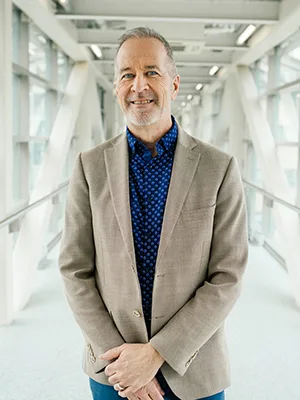
EXPANSION AND EVOLUTION
It’s important to note that, despite a renewed focus on preventive, accessible, and community-based healthcare, Southlake’s main hospital site on Davis Drive will remain as a core component of its new strategy.
Developing a second hospital site is in progress and looks to add over 240 additional inpatient beds, expanding acute, post-acute, and emergency care, as well as diagnostic imaging, surgical, and mental health facilities.
This will not only lead to additional space but create an environment where the notion of attending to the most acutely ill within the hospital walls is carried forward in the form of intense services for a shorter period before repatriating care into the community.
“Something we’re excited about is a more modern care delivery model, with the acute care footprint to match,” Dr. Woods confirms.
In addition, Southlake is proud of its emergency department’s current time-to-physician initial assessment, which remains one of the lowest in the province at roughly 40 minutes.

“This is a testament to the diligence and professionalism of the people working at Southlake Health. They’ve engineered a flexible staffing model that can accommodate unexpected surges,” he prides.
The expansion of its emergency department will enable Southlake to fine-tune admission processes and assess patients more fluidly and effectively, which is anticipated to have a positive knock-on effect on job satisfaction for Southlake’s workforce of nearly 6,000 staff.
“We hope to achieve a better patient and staff experience by making our emergency department a more pleasant place to be overall,” Dr. Woods outlines.
At the same time, Southlake is looking to continue to push care further into the community by collaborating with municipalities and private corporations to improve community health and wellness.
A recent memorandum of understanding (MoU) signed in partnership with the Town of Georgina and the Northern York South Simcoe Ontario Health Team (NYSS OHT) outlined areas for collaboration through new facilities, expanded health and wellness programming, advocacy and community engagement, data sharing, research, and innovation.
“This partnership will help us strengthen local healthcare services as we work to bring care closer to home,” he shares.
EXEMPLARY CARE, CLINICAL EXCELLENCE
Woods is proud to be Southlake’s CEO with its deep history of clinical excellence, quality, and patient safety, having been accredited with Exemplary Standing by Accreditation Canada for the last 16 years.
“As leaders, we need to carry forward the mantle of clinical excellence, be present, and remember that our true work is done on the ground. Our business is not doing interviews and budgets, but delivering care,” he points out.
As such, leading-edge care at Southlake remains an unflinching promise, and it is both the words and actions of its leaders that drive this message home.
Meanwhile, thoughtful investment is essential to maintaining Southlake’s award-winning status, which continues to enable unparalleled care.
“We must choose carefully how we allocate our extremely scarce resources to adequately fund our teams and invest in the tools and support they require to continue doing their jobs well,” Dr. Woods asserts.
In this way, Southlake is grateful for its volunteer board of directors and loyal base of community support. Despite a challenging financial environment, the board has courageously supported the organization’s change in direction to accommodate its new strategy.
“Partnerships and support are what will make us successful and prove to Ontario that we can deliver integrated care at scale and achieve better outcomes as a result,” he explains.
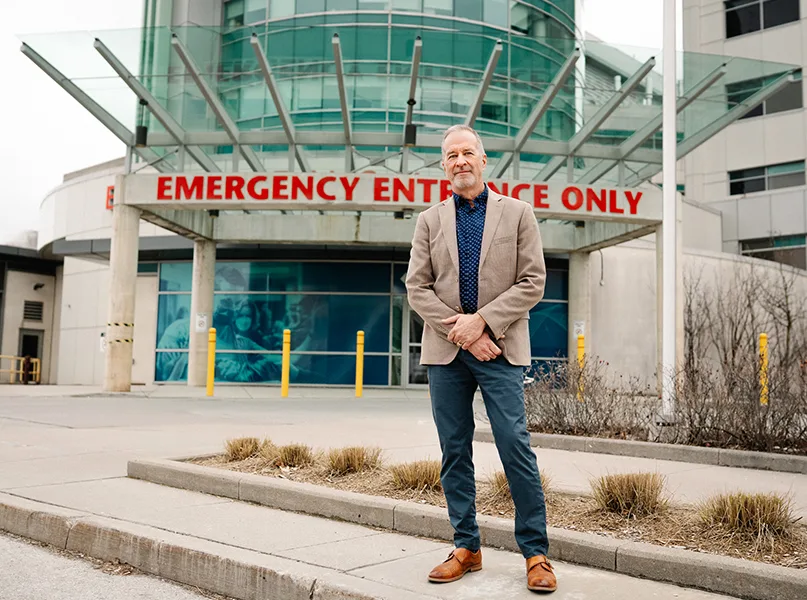
A FUTURE OF INNOVATION AND EXPANSION
Looking forward to 2025 and beyond, Southlake seeks to achieve two main targets, the first of which is continuing to be good stewards of Ontario’s tax dollars.
“We’ve readily embraced the notion of financial stewardship, and we continue to do the best we can with the scarce resources we have,” Dr. Woods details.
Southlake’s second target is to fluidly implement its new operating model through collaboration as it moves into the new year.
This goal is making significant headway having already signed MoUs with two out of the six municipalities primarily served by Southlake.
Meanwhile, it will also continue to widely implement extensivism, through which it hopes to change the way people typically perceive hospital treatment and the requirement for patient care to occur exclusively in a hospital setting.
“Across Ontario, we hope to change the culture surrounding patient care and the role of a hospital within an integrated delivery system, but we must do this by proving our model works – just saying it does won’t change anything.”
To achieve this, Southlake is putting supportive digital infrastructure in place in the form of data and predictive analytics, artificial intelligence (AI), and machine learning (ML) to more readily anticipate patient illnesses and proactively intervene.
Southlake is also learning from other leading hospitals in Canada, such as Jewish General Hospital in Montreal, which has an effective virtual unit.
“As well-placed data infrastructure and patient care coordination increases, so does our ability to deliver virtual care effectively,” comments Dr. Woods, emphasizing the significance of technology in advancing extensivism.
“When people begin to experience these different ways of receiving care, they’ll start to think Southlake is really doing something different here,” he concludes.
